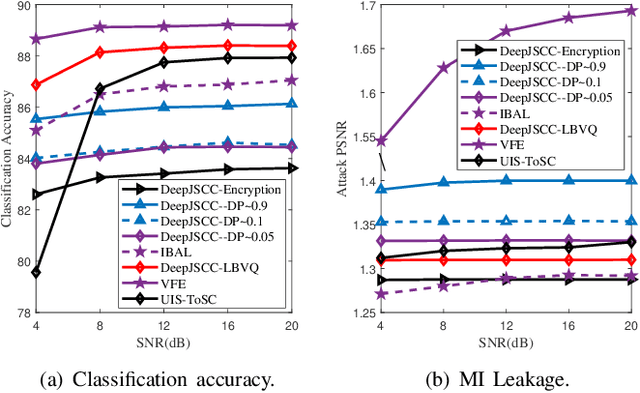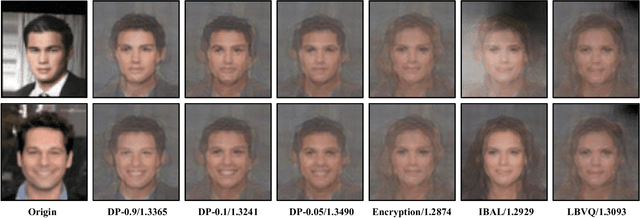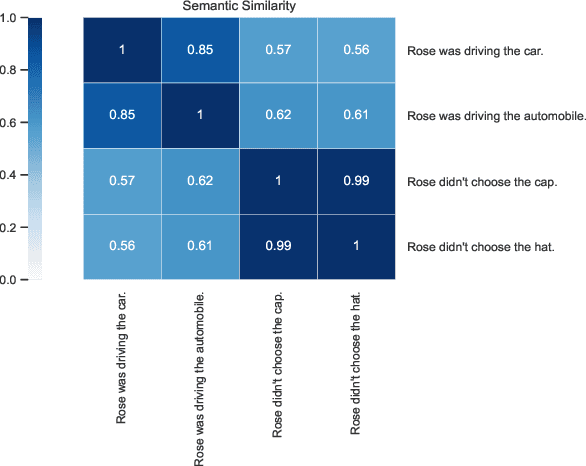Yanhu Wang
Task-Oriented Communication for Graph Data: A Graph Information Bottleneck Approach
Sep 04, 2024



Abstract:Graph data, essential in fields like knowledge representation and social networks, often involves large networks with many nodes and edges. Transmitting these graphs can be highly inefficient due to their size and redundancy for specific tasks. This paper introduces a method to extract a smaller, task-focused subgraph that maintains key information while reducing communication overhead. Our approach utilizes graph neural networks (GNNs) and the graph information bottleneck (GIB) principle to create a compact, informative, and robust graph representation suitable for transmission. The challenge lies in the irregular structure of graph data, making GIB optimization complex. We address this by deriving a tractable variational upper bound for the objective function. Additionally, we propose the VQ-GIB mechanism, integrating vector quantization (VQ) to convert subgraph representations into a discrete codebook sequence, compatible with existing digital communication systems. Our experiments show that this GIB-based method significantly lowers communication costs while preserving essential task-related information. The approach demonstrates robust performance across various communication channels, suitable for both continuous and discrete systems.
Trustworthy Semantic-Enabled 6G Communication: A Task-oriented and Privacy-preserving Perspective
Aug 08, 2024



Abstract:Trustworthy task-oriented semantic communication (ToSC) emerges as an innovative approach in the 6G landscape, characterized by the transmission of only vital information that is directly pertinent to a specific task. While ToSC offers an efficient mode of communication, it concurrently raises concerns regarding privacy, as sophisticated adversaries might possess the capability to reconstruct the original data from the transmitted features. This article provides an in-depth analysis of privacy-preserving strategies specifically designed for ToSC relying on deep neural network-based joint source and channel coding (DeepJSCC). The study encompasses a detailed comparative assessment of trustworthy feature perturbation methods such as differential privacy and encryption, alongside intrinsic security incorporation approaches like adversarial learning to train the JSCC and learning-based vector quantization (LBVQ). This comparative analysis underscores the integration of advanced explainable learning algorithms into communication systems, positing a new benchmark for privacy standards in the forthcoming 6G era.
Large Language Models for Base Station Siting: Intelligent Deployment based on Prompt or Agent
Aug 07, 2024



Abstract:Traditional base station siting (BSS) methods rely heavily on drive testing and user feedback, which are laborious and require extensive expertise in communication, networking, and optimization. As large language models (LLMs) and their associated technologies advance, particularly in the realms of prompt engineering and agent engineering, network optimization will witness a revolutionary approach. This approach entails the strategic use of well-crafted prompts to infuse human experience and knowledge into these sophisticated LLMs, and the deployment of autonomous agents as a communication bridge to seamlessly connect the machine language based LLMs with human users using natural language. This integration represents the future paradigm of artificial intelligence (AI) as a service and AI for more ease. As a preliminary exploration, this research first develops a novel LLM-empowered BSS optimization framework, and heuristically proposes four different potential implementations: the strategies based on Prompt-optimized LLM (PoL), human-in-the-Loop LLM (HiLL), LLM-empowered autonomous BSS agent (LaBa), and Cooperative multiple LLM-based autonomous BSS agents (CLaBa). Through evaluation on real-world data, the experiments demonstrate that prompt-assisted LLMs and LLM-based agents can generate more efficient, cost-effective, and reliable network deployments, noticeably enhancing the efficiency of BSS optimization and reducing trivial manual participation.
Semantic Importance-Aware Communications with Semantic Correction Using Large Language Models
May 25, 2024



Abstract:Semantic communications, a promising approach for agent-human and agent-agent interactions, typically operate at a feature level, lacking true semantic understanding. This paper explores understanding-level semantic communications (ULSC), transforming visual data into human-intelligible semantic content. We employ an image caption neural network (ICNN) to derive semantic representations from visual data, expressed as natural language descriptions. These are further refined using a pre-trained large language model (LLM) for importance quantification and semantic error correction. The subsequent semantic importance-aware communications (SIAC) aim to minimize semantic loss while respecting transmission delay constraints, exemplified through adaptive modulation and coding strategies. At the receiving end, LLM-based semantic error correction is utilized. If visual data recreation is desired, a pre-trained generative artificial intelligence (AI) model can regenerate it using the corrected descriptions. We assess semantic similarities between transmitted and recovered content, demonstrating ULSC's superior ability to convey semantic understanding compared to feature-level semantic communications (FLSC). ULSC's conversion of visual data to natural language facilitates various cognitive tasks, leveraging human knowledge bases. Additionally, this method enhances privacy, as neither original data nor features are directly transmitted.
Semantic Communications with Ordered Importance using ChatGPT
Feb 12, 2023



Abstract:This letter proposes a novel semantic communication scheme with ordered importance (SCOI) using the chat generative pre-trained transformer (ChatGPT). In the proposed SCOI scheme, ChatGPT plays the role of a consulting assistant. Given a message to be transmitted, the transmitter first queries ChatGPT to output the importance order of each word. According to the importance order, the transmitter then performs an unequal error protection transmission strategy to make the transmission of essential words more reliable. Unlike the existing semantic communication schemes, SCOI is compatible with existing source-channel separation designs and can be directly embedded into current communication systems. Our experimental results show that both the transmission bit error rate (BER) of important words and the semantic loss measured by ChatGPT are much lower than the existing communication schemes.
Transceiver Cooperative Learning-aided Semantic Communications Against Mismatched Background Knowledge Bases
Jan 09, 2023



Abstract:Semantic communications learned on background knowledge bases (KBs) have been identified as a promising technology for communications between intelligent agents. Existing works assume that transceivers of semantic communications share the same KB. However, intelligent transceivers may suffer from the communication burden or worry about privacy leakage to exchange data in KBs. Besides, the transceivers may independently learn from the environment and dynamically update their KBs, leading to timely sharing of the KBs infeasible. All these cause the mismatch between the KBs, which may result in a semantic-level misunderstanding on the receiver side. To address this issue, we propose a transceiver cooperative learning-assisted semantic communication (TCL-SC) scheme against mismatched KBs. In TCL-SC, the transceivers cooperatively train semantic encoder and decoder neuron networks (NNs) of the same structure based on their own KBs. They periodically share the parameters of NNs. To reduce the communication overhead of parameter sharing, parameter quantization is adopted. Moreover, we discuss the impacts of the number of communication rounds on the performance of semantic communication systems. Experiments on real-world data demonstrate that our proposed TCL-SC can reduce the semantic-level misunderstanding on the receiver side caused by the mismatch between the KBs, especially at the low signal-to-noise (SNR) ratio regime.
Signal Shaping for Semantic Communications
Feb 04, 2022



Abstract:Semantic communications target to reliably convey the semantic meaning of messages. It is different from existing communication systems focusing on reliable bit transmission. To achieve the goal of semantic communications, we propose a signal shaping method by minimizing the semantic loss, which is measured by the pretrained bidirectional encoder representation from transformers (BERT) model. The signal set optimization problem is transformed to a vector optimization subject to a power constraint. We propose an efficient projected gradient descent method to solve the problem and prove its convergence. Simulation results show that the proposed method outperforms existing signal shaping methods in minimizing the semantic loss.
 Add to Chrome
Add to Chrome Add to Firefox
Add to Firefox Add to Edge
Add to Edge